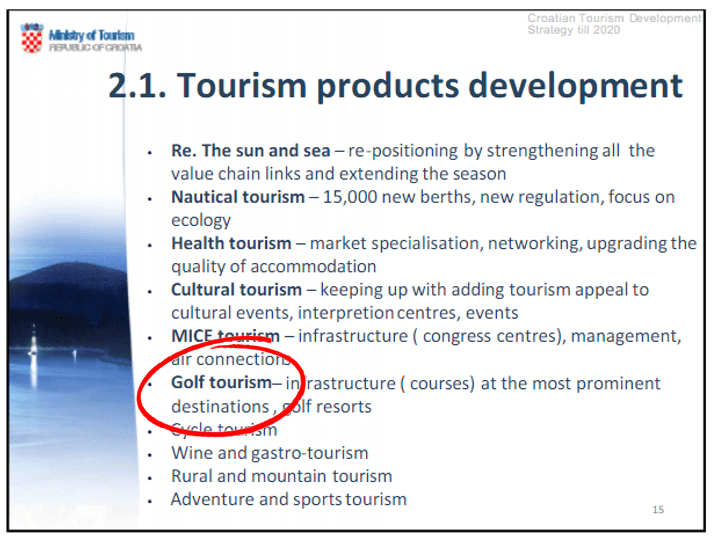July 13, 2015 – The Croatian tourism numbers are the subject of national discussion once again. A comparison to 1990 statistics and some thoughts on strategy.
Something is not quite right.
It is a record season, say the statistics, and yet private renters are complaining that they are empty.
Croatian tourism introduced a transparent tourism statistics reporting system, which won international awards for its transparency – “the information is available in real time for research and destination management,” said UNWTO – and then Croatia restricted access to the information.
Istria seems to be doing as well as usual, but there is no doubt that Dalmatia is down. Emptier roads, ferry queues etc point to that fact.
Here is Jelsa on July 8 at 19:25, above, and 22:00. Back in 1983, Jelsa was voted the top destination in former Yugoslavia.
And yet places like Split are full (as confirmed by many locals), but there were almost 500 available places to stay on Booking.com along on the first night of Ultra Europe. We answered the Split question in this recent article – Is Split Full? VERY. Are Apartments Empty? VERY. The Shocking Explanation.
Huge oversupply of private accommodation. Just how much Kreso Macan explained yesterday in this article, and the reasons why – there has been a 25% increase in private bed accommodation in Croatia in the last three years. Staggering.
That got me thinking. How did the numbers of tourist arrivals, overnight stays and accommodation breakdown with previous years. I contacted the Croatian National Tourist Board for some official statistics.
I have been critical of CNTB on several occasions, but one thing I will commend them for is the quickness of their response. They are easily the best public institution in terms of response time. And light years ahead of the Ministry of Tourism press department, which still could provide a simple answer after 17 phone calls, several emails and two months.
The information CNTB sent me is below – a comparison between 1990, the last big season before the way, and 2018, the latest record-breaking season.
1990 – Number of tourist arrivals – 8,497,000
2018 – Number of tourist arrivals – 19,700,000
Percentage increase of tourist arrivals from 1990 to 2018 – 131%
1990 – Number of overnights – 52,523,000
2018 – Number of overnights – 106,000,000
Percentage increase of overnights from 1990 to 2018 – 101%
1990 Hotel beds – 142,917
2018 Hotel beds – 130,026
Percentage increase of overnights from 1990 to 2018 – MINUS 9%
1990 Private accommodation beds – 264,092
2010 Private accommodation beds – 428,464
2018 Private accommodation beds – 800,108
Percentage increase of overnights from 1990 to 2018 – 302%
1990 Total beds – 862,680
2018 Total beds – 1,266,785
Percentage increase of overnights from 1990 to 2018 – 46%
These are the full statistics from the CNTB report. So despite having 11.5 million more tourists and 54 million more overnights, Croatia has 9% less hotels beds today than it had in 1990. It is also a little strange to note that Croatia had 2,500 hotel beds less in 2018 than in 2017.
But private beds? This has more than tripled since 1990, to more than 800,000. The population of Croatia is now less than 4 million, so that is one rental bed per five inhabitants including children.
None of these numbers should be a surprise to our tourism chiefs, as they compiled the statistics (and presumably look at them occasionally). So is this the official strategy? The apartmanisation of Croatian tourism, while restricting the development of hotels? It might seem that way to a number of big foreign projects on the coast where the land has been happily sold to them, and then the projects stop. We are in the process of compiling a map of this – the numbers run into several billion euro.

And if that is not the strategy, then what is?
The Ministry of Tourism published its 7-year plan from 2013 – 2020 some time ago, which gives us some insight into the strategy. Just a few months before we hit the final year of the 7-year plan:
Zero of the planned golf courses have been started, the only development is a 500 million lawsuit against the State from an Israeli golf investor.
The sun and sea is not even looking that guaranteed due to climate change – does Croatian tourism have a Plan B?
Wine and gastro-tourism is nowhere. We are proud that the original Zinfandel comes from Dalmatia, but Dalmatia does not have a wine road. How much revenue does gourmet tourism bring in compared to Germany, France, Italy or Spain? It is seven years since Anthony Bourdain told the world about Croatia.
International experts agree that Croatia could be in the world’s top 10 for medical tourism within 10 years if Croatian officials could get their act together. As we approach the seventh year of the 7-year plan, we still don’t have a task force.
Do we really have 15,000 more berths for our nautical tourism?
And what exactly is the 2019 strategy moving forward? More apartments and hope the sun keeps shining?
I often get accused of having an agenda when I write constructively critical articles about Croatia. And – full disclosure – I have an agenda.
I want the best for my family and children, and for this country, which means a proper approach to tourism development. The current approach is a total disaster.
And rather than just criticise without offering a solution, here is what I would focus on – Branding Croatia: 5 Gifts and Trends to Focus On.









